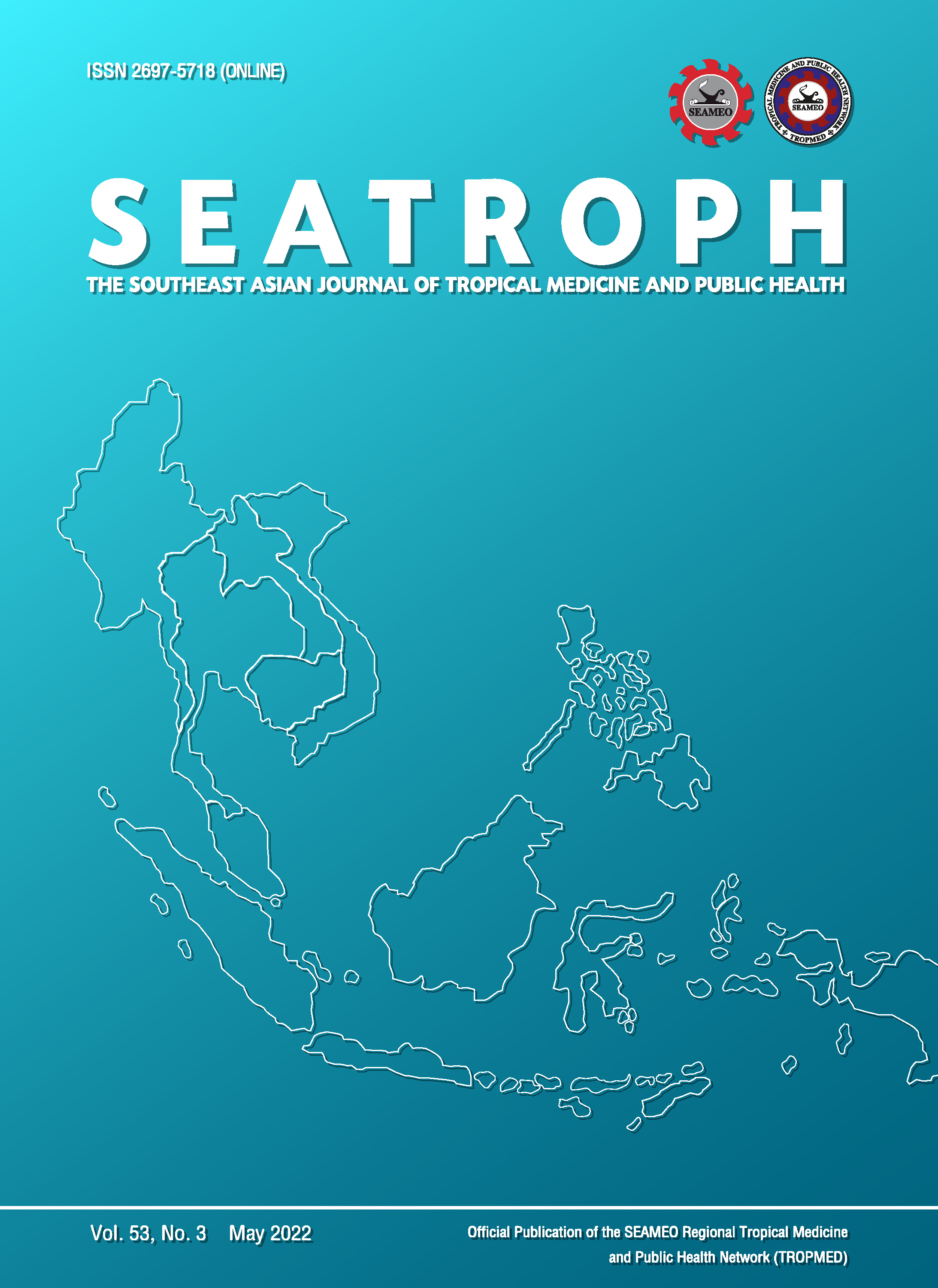ANTIBIOGRAMS AND VIRULENCE GENES OF ESCHERICHIA COLI AND SALMONELLA SP FROM FARM PIGS IN CENTRAL THAILAND
Keywords:
Antimicrobial resistance, Escherichia coli, Pigs, Salmonella, Thailand, Salmonella serovar, stool, farm pig, virulence geneAbstract
The increasing global trend of antimicrobial resistance (AMR), especially in pig production, can pose a threat to human health. The study investigated the prevalence of AMR in Escherichia coli and Salmonella serovars from farm pigs in central Thailand. E. coli and Salmonella serovars from pig stool specimens were identified by standard methods, susceptibility to antimicrobials by the disk agar diffusion method and pathogenic E. coli virulence genes by multiplex PCR. E. coli isolates harboring astA were the most predominant (27%), followed by eaeA (9%). E. coli isolates with virulence genes were present significantly more in pigs with loose stool (70%) than those with normal stool (40%) (p-value <0.001). The overall prevalence of Salmonella sp isolates in pigs was 44.3%, with S. Agona serovar predominant (27%). E. coli and Salmonella sp isolates demonstrated predominant resistance to penicillin (71 and 79% respectively), followed by tetracycline (67.5 and 73.1%), then streptomycin (52 and 51%), and sulfonamide (45 and 36%), with multidrug resistance (MDR) (≥3 antimicrobial classes) in 66 and 74% E. coli and Salmonella sp isolates, respectively. E. coli harboring a single astA was significantly associated with MDR phenotype compared to those without any virulence gene (odds ratio = 2.16, 95% confidence interval: 1.09-4.29). In conclusion, the study indicates that farm pigs in central Thailand could be potential sources of foodborne MDR E. coli and Salmonella sp.
Downloads
Published
Versions
- 2022-07-25 (2)
- 2022-07-23 (1)




